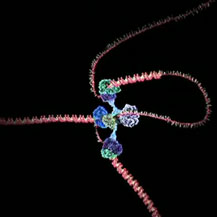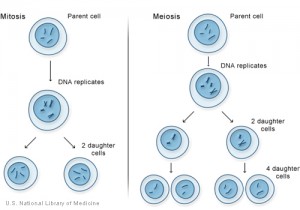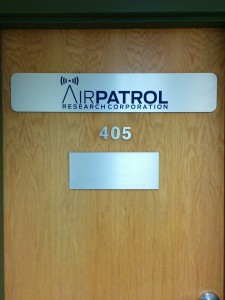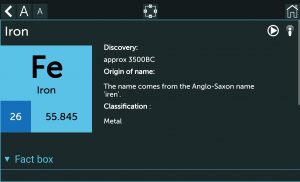Grade 9
Electricity Mindmap
Questions
- What is the most known source of power?
- What is the worst power for the environment?
- What is the most efficient power source?
- What was the earliest form of electricity?
- How does power flow through circuits?
- What is the most dangerous source of power?
- What is the easiest form electricity to generate?
- What is the hardest form of electricity to generate?
Playing With Exponents
Things Ive learned:
Able to do colors with the hexadecimal code. Size can be done with it, and /cdot is for multiplication and /div is for division
ADL2016 App Review
Problem: Is there a way to study the periodic table while
Brainstorm: I could check the app store for a periodic table
App Explanation: The apps name is, Elements – Periodic Table, it was made by the company, SusaSoftX, and it has every known element with facts and pictures.
Some of the pros of the app are that it has multiple pictures and facts about the elements. It also includes the atomic weights and numbers.
Some of the cons are that it doesn’t have the atomic mass of elements or the ion charge of the elements.
I have learned from the app that how easy it can be to have a quick way to check the elements, as well as being able to check what they look like and know certain facts about them. As well as how common certain elements are when I thought they were really rare
Silent Reading Book Finished Block A English 9 Enders Game
Enders Game by Orson Scott Card is a good book I would rate it 8/10 because it had a strong introduction and Ending but the middle wasn’t as good
English 9 Comic Strip Block A
Digital footprint COL project
Question 1. How might your digital footprint affect your future opportunities? Give at least 2 examples.
My digital footprint could prevent me from getting jobs because if the people who want to hire me find it and find something they don’t like then they wont hire me. It can also affect me getting into colleges or universities. It could also make it difficult for me to do volunteer work. 
![]()
source of images: http://www.clipartpanda.com/categories/college-campus-clip-art , http://www.123rf.com/clipart-vector/job_interview.html
Question 2: Describe at least three strategies that you can use to keep your digital footprint appropriate and safe.
You can keep your digital footprint safe by making everything you post online private so that only people you want to see it can see it. You can keep it appropriate by knowing what your posting and what it can cause. You can also keep it safe by not putting out any major personal information eg. Address, Social security number, and credit card information.


source of images: http://www.article-3.com/wp-content/uploads/2011/06/iStock_000015978544XSmall.jpg , http://www.jorncourt.com/uploads/1/1/5/6/11565095/178292.jpg
Question 3. What information did you learn that you would pass on to other students? How would you go about telling them?
I would pass on the information about how your digital portfolio is with you before your born and even after you die, I would tell them verbally and through technology. I would also tell them about the what can happen if everyone can see your digital footprint


Source of images: http://connectmogul.com/2013/03/texting-statistics/
http://images.clipartpanda.com/talk-clipart-61439-orange-man-talking-bubble.jpg
Get to know me assignment English 9
SSEP1 Onion Root Experiment Review
Dividing root cells in microgravity
a) On July 13th 2014, an experiment made by the grade sevens of Northland Preparatory Academy’s, from Flagstaff, Arizona was launched in to space. Their experiment was to attempt the growth and division of onion root cells in micro-gravity abord the International Space Station.Their objectif was to see if onion root cells would divide with zero gravity and if the experiment was a success, they wanted to see if there are any mutations during the replication of DNA when on the International Space Station. In order too take action on this experiment they grew onion root cells on the International Space Station and here on earth, to observe for any mutations too the cells on the International Space Station.

https://en.wikipedia.org/wiki/Cell_division
b) The background research for this team to see if the onion cells could grow and divide like they do on earth. They wanted to know if cell mutations was common without gravity. They wanted to see if the onion root would grow to create another onion root. They predicted that the cells would have trouble multiplying with the absence of gravity.

http://www.thompson-morgan.com/how-to-grow-onions-and-shallots
c) The control group: the model that the experiment follows changing only one thing too experiment. In this case the control group was done on earth and the difference between that and the experimental group was the absence of gravity in space. The team believed that their would be mutations when the cells were dividing without gravity. Susan Brown the teacher in charge of this experiment said that they did have success in there experiment on earth.
d) i. We found the name of the science teacher who was helping with the experiment, Susan Brown from Northland preparatory academy, she was very helpful and answered our questions in an email. We asked her how they stored there experiment when it went into space. Her response: “We used the FME configuration where we had two clips/three compartments. One compartment held seeds inn cotton, the second held water and the third held ethanol.” In her email she said that it was kept like this until two weeks into the experiment when the astronaut had to open the first clip which allowed water to flow into the seeds/cotton compartment. He had to shake the FME as well. Right before they were to send the experiment back to her and her class, they had the astronaut release the ethanol to stop all growth. She also said that in the end the experiment failed after a problem with the screws and they don’t know if it was related to that or it was something else. They did get another opportunity however this was the shipment where the ship men exploded so they didn’t get to see what happened.
ii. Our groups research on this concept shows:

http://www.hhmi.org/biointeractive/dna-replication-advanced-detail

https://ghr.nlm.nih.gov/primer/howgeneswork/cellsdivide
Onions on earth grow by multiplying their cells on root, and onions are used for mitosis experiments. During mitosis the cell splits into two identical cells. In order for the DNA to be shared through cell division it must go through number of hases so that the DNA is passed to the next cells.
2. We think that this team won because their project was very resourceful. Dividing onion root cells in space to see if there would be any mutations can help our planet to learn the possibility of living in an environment with no gravity. Because, if the onion root cell growth was successful with no mutations then our planet can know that if planting onion cells are possible then maybe planting other vegetables is possible. Another reason that this team won because they had a very interesting idea that could be done easily without and prob
lems with storage and if it worked they could then grow food in space
We would also like to thank Susan Brown a teacher from Flagstaff, Arizona for her help with this project it just goes to show how that we can learn from anyone anywhere.


